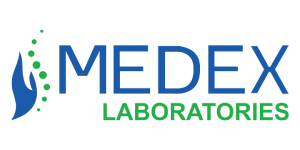Respiratory Pathalogy Panel
A respiratory pathogens (P) panel checks for pathogens in the respiratory tract. A pathogen is a virus, bacteria, or another organism that causes an illness. Your respiratory tract is made up of parts of the body involved in breathing. This includes your lungs, nose, and throat. There are many types of viruses and bacteria that can infect the respiratory tract. Symptoms are often similar, but treatment can be very different. Hence, it’s important to make the right diagnosis. Other viral and bacterial tests for respiratory infections are often limited to testing for one specific pathogen. Several samples may be needed. The process can be difficult and time-consuming.
Symtoms
The following symptoms may be due to air or droplet-borne infections. A respiratory pathogen panel may be ordered when you are seriously ill or at increased risk of com- plications and have signs and symptoms associated with an upper respiratory infection, especially if they are prolonged and do not resolve without treatment. Signs and symptoms may include:
- Coughing
- sneezing
- Stuffy or runny nose
- Sore throat
- Headache
- Weakness, fatigue
- Muscle aches
- Fever
- chills
- Wheezing
- difficulty
- breathing
Low appetite In some cases, diarrhea, and vomiting. Texas Diagnostics’ comprehensive P panel detects most of the respiratory pathogens through cutting-edge real-time PC technology. Texas Diagnostics respiratory pathogens panel is used to help diagnose:
- Viral infections, such as: Flu and Common cold.
- Respiratory syncytial virus (RSV).
- This is a common and usually mild respiratory infection. But it can be dangerous to babies and the elderly.
- Adenovirus infection.
- Adenoviruses cause many different types of infections. These include pneumonia and croup, an infection that causes hoarse, barking coughs.
- Bacterial infections, such as: Whooping cough and Bacterial pneumonia.
- Antibiotic resistance genes are detected.

